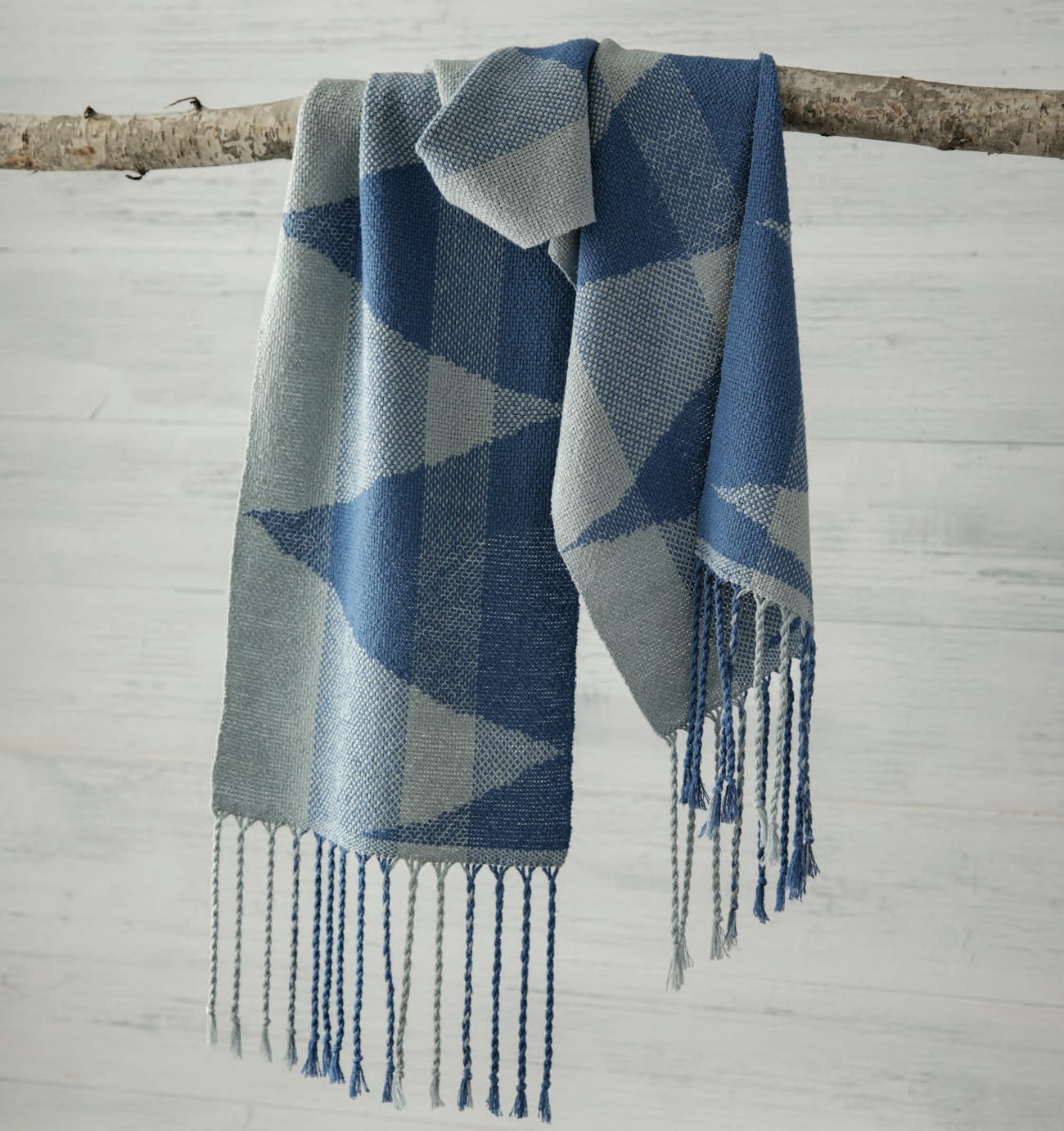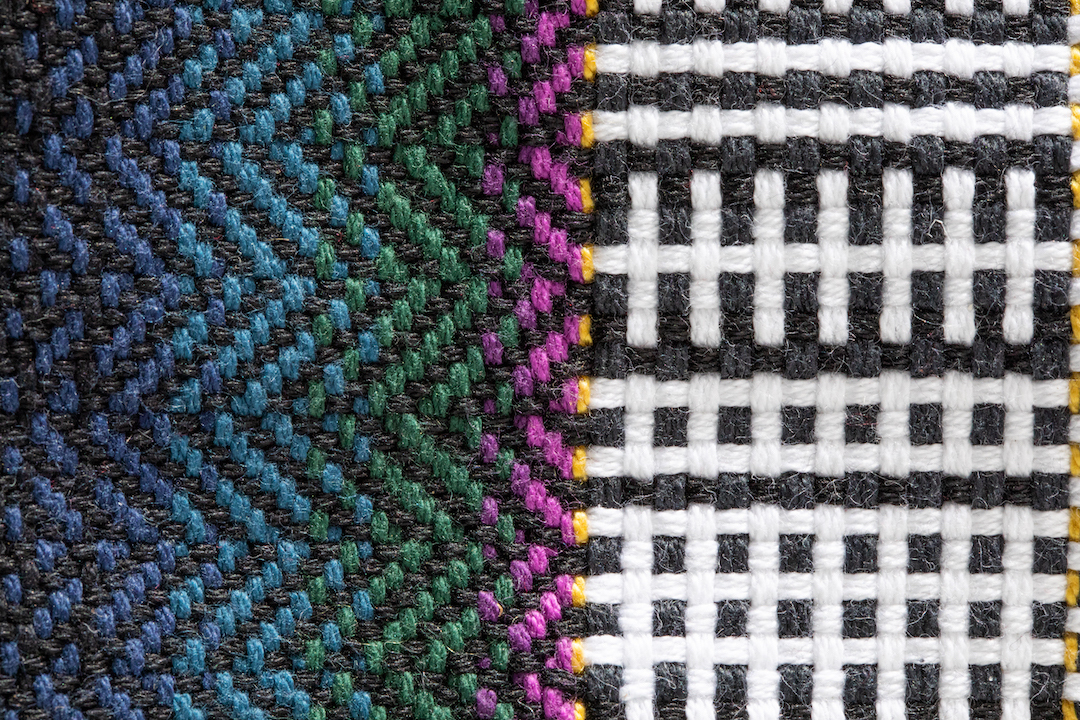Rigid-heddle and tapestery weavers alike love clasped-weft weaving—which is a whole lot easier to do than to enunciate properly. If you want to change colors in the weft, without leaving a slit, clasped-weft does the job. But did you know there are 2 methods to this technique? While they’re similar, which one you choose can make a huge difference in the finished cloth.
Each version starts the same way. You place a weft on either side of the loom, open the shed, and move both wefts toward the center until they meet in the area where you want the clasp to take place. Once the wefts meet, you can wrap them together. What happens next is the bit where you must make a choice.
 The weft used by Angela Tong in the Snowy Mountains Scarf (Easy Weaving with Little Looms Holiday 2021) is fine enough so that 2 threads in the same pick won’t make too much of a difference.
The weft used by Angela Tong in the Snowy Mountains Scarf (Easy Weaving with Little Looms Holiday 2021) is fine enough so that 2 threads in the same pick won’t make too much of a difference.
The way I originally learned, you continue in the same shed and take the weft back to the edge where it came from before beating and changing the shed. With this method, you’ll have 2 weft threads in one pick. If you’ve been weaving plain weave before clasping, it essentially causes your ppi to halve in the clasped areas. It will also create a denser weave, which can reduce the drape of the finished item.
The other option is to clasp the wefts and then pull them out of the shed completely through the warp, beat, and change the shed before pulling them back through the warp and to the other side. Doing so keeps your ppi consistent if you have any areas of plain weave and results in a fabric with better drape than option 1.
 While this cloth was woven on a multi-shaft loom, it’s a great example of combining both methods of clasped-weft weaving. For her Light Sussex Color-and-Weave purse in Handwoven, May/June 2023, Alison Irwin overlaped the clasped weft for a few inches before pulling it out of the warp, beating, changing the shed, and then pulling it back through and out toward the selvedges.
While this cloth was woven on a multi-shaft loom, it’s a great example of combining both methods of clasped-weft weaving. For her Light Sussex Color-and-Weave purse in Handwoven, May/June 2023, Alison Irwin overlaped the clasped weft for a few inches before pulling it out of the warp, beating, changing the shed, and then pulling it back through and out toward the selvedges.
Which method you chose depends on your yarn, your design, and what you’re weaving. If drape is a concern, then you’ll want to use the second method. If you’re designing a fabric that you want to be dense (placemat, runner, or rug, for example), the first method will work fine. If you plan to full your piece after, you can use either without worry because the end result won’t be that much different. If you’re weaving a wall hanging, think about the aesthetics of each method. Consider sampling and playing around with the technique—you can even combine the two techniques to create areas of doubled weft in one part of the cloth and single in others, as shown in the photo above.
Whatever you do, I hope you have fun!
Happy Weaving!
Christina

